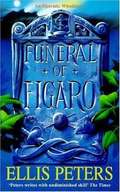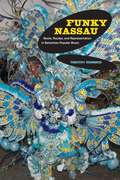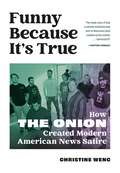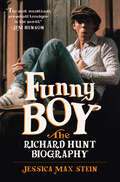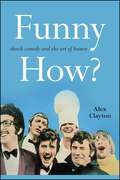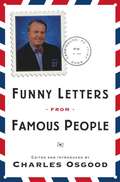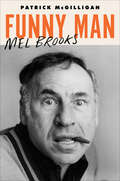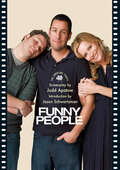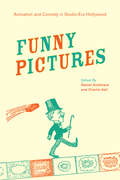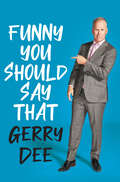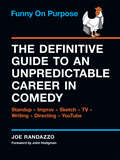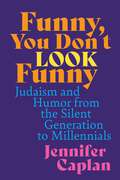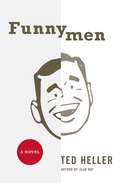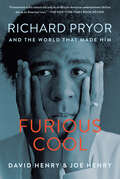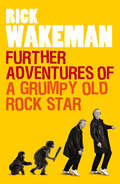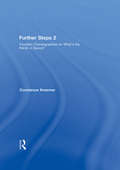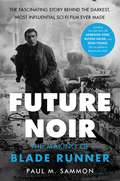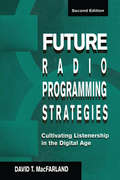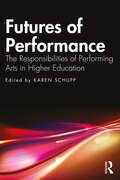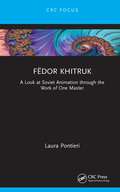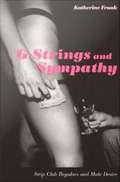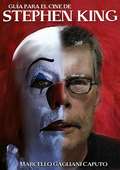- Table View
- List View
Funeral Rites in Contemporary Korea: The Business of Death
by Gil-Soo HanThis book explores 21st century Korean society on the basis of its dramatically transforming and rapidly expanding commercial funeral industry. With insights into contemporary Confucianism, shamanism and filial piety, as well as modernisation, urbanisation, the division of labour and the digitalisation of consumption, it is the first study of its kind to offer a sophisticated, integrated sociological analysis of how the commodification of death intersects with capitalism, popular culture and everyday life in contemporary Korea. Through innovative analyses of funeral advertising and journalism, screen and literary representations of funerals, online media, consumer accounts of using funeral services and other sources, it offers a complex picture of the widespread effects of economic development, urbanisation and modernisation in South Korean society over the past quarter century. In the aftermath of the Korean “economic miracle” novel ways of paying respect to deceased kin have emerged; using Max Weber's concept of “pariah capitalism”, Gil-Soo Han shows how the heightened obsession with and boom in the commodification of death in Korea reflects radical transformations in both capital and culture.
Funeral of Figaro
by Ellis PetersWhen Figaro is killed in a plane crash, it seems nothing can save the London production. A world-class baritone arrives from Europe to take over, then he too is killed - in mid-performance. Detective Inspector Musgrave embarks on a quest to discover who is responsible.
Funky Nassau: Roots, Routes, and Representation in Bahamian Popular Music
by Timothy RommenThis book examines the role music has played in the formation of the political and national identity of the Bahamas. Timothy Rommen analyzes Bahamian musical life as it has been influenced and shaped by the islands' location between the United States and the rest of the Caribbean; tourism; and Bahamian colonial and postcolonial history. Focusing on popular music in the second half of the twentieth and early twenty-first centuries, in particular rake-n-scrape and Junkanoo, Rommen finds a Bahamian music that has remained culturally rooted in the local even as it has undergone major transformations. Highlighting the ways entertainers have represented themselves to Bahamians and to tourists, Funky Nassau illustrates the shifting terrain that musicians navigated during the rapid growth of tourism and in the aftermath of independence.
Funniest Joke Book
by Seasons PublishingLaugh aloud and share with family and friends the craziest jokes you will ever come across.
Funny Because It's True: How The Onion Created Modern American News Satire
by Christine WencDiscover the real truth behind the original fake news with this in-depth history of beloved humor publication, The Onion. In 1988, a band of University of Wisconsin–Madison undergrads and dropouts began publishing a free weekly newspaper with no editorial stance other than &“You Are Dumb.&” Just wanting to make a few bucks, they wound up becoming the bedrock of modern satire over the course of twenty years, changing the way we consume both our comedy and our news. The Onion served as a hilarious and brutally perceptive satire of the absurdity and horrors of late twentieth-century American life and grew into a global phenomenon. Now, for the first time, the full history of the publication is told by one of its original staffers, author and historian Christine Wenc. Through dozens of interviews, Wenc charts The Onion&’s rise, its position as one of the first online humor sites, and the way it influenced television programs like The Daily Show and The Colbert Report. Funny Because It&’s True peels back the layers to reveal how a group of young misfits from flyover country unintentionally created a cultural phenomenon.
Funny Boy: The Richard Hunt Biography
by Jessica Max Stein"The most sensational, perpetual teenager in the world.” —Jim Henson "To know him was to love him, and we do." —Mark Hamill Funny Boy: The Richard Hunt Biography tells the life story of a gifted performer whose gleeful irreverence, sharp wit and generous spirit inspired millions. Richard Hunt was one of the original main five performers in the Muppet troupe. He brought to life an impressive range of characters on The Muppet Show, Sesame Street, Fraggle Rock and various Muppet movies, everyone from eager gofer Scooter to elderly heckler Statler, groovy girl Janice to freaked-out lab helper Beaker, even early versions of Miss Piggy and Elmo. Hunt also acted, directed and mentored the next generation of performers. His accomplishments are all the more remarkable in that he crammed them all into only 40 years. Richard Hunt was just 18 years old when he joined Jim Henson’s company, where his edgy humor quickly helped launch the Muppets into international stardom. Hunt lived large, savoring life’s delights, amassing a vivid, disparate community of friends. Even when the AIDS epidemic wrought its devastation, claiming the love of Hunt’s life and threatening his own life, he showed an extraordinary sense of resilience, openness and joy. Hunt’s story exemplifies how to follow your passion, foster your talents, adapt to life’s surprises, genuinely connect with everyone from glitzy celebrities to gruff cab drivers – and have a hell of a lot of fun along the way.
Funny How?: Sketch Comedy and the Art of Humor (SUNY series, Horizons of Cinema)
by Alex ClaytonWhat makes something funny? This book shows how humor can be analyzed without killing the joke. Alex Clayton argues that the brevity of a sketch or skit and its typical rejection of narrative development make it comedy-concentrate, providing a rich field for exploring how humor works. Focusing on a dozen or so skits and scenes, Clayton shows precisely how sketch comedy appeals to the funny bone and engages our philosophical imagination. He suggests that since humor is about persuading an audience to laugh, it can be understood as a form of rhetoric. Through vivid, highly readable analyses of individual sketches, Clayton illustrates that Aristotle's three forms of appeal—logos, the appeal to reason; ethos, the appeal to communality; and pathos, the appeal to emotion—can form the basis for illuminating the inner workings of humor. Drawing on both popular and lesser-known examples from the United States, United Kingdom, and elsewhere—Monty Python's Flying Circus, Key and Peele, Saturday Night Live, Airplane!, and Smack the Pony—Clayton reveals the techniques and resonances of humor.
Funny Letters from Famous People
by Charles OsgoodCharles Osgood provides humorous and informative commentary to put these letters in context. It's a fun peek at real correspondence! A very enjoyable read!
Funny Man: Mel Brooks
by Patrick McGilliganA deeply textured and compelling biography of comedy giant Mel Brooks, covering his rags-to-riches life and triumphant career in television, films, and theater, from Patrick McGilligan, the acclaimed author of Young Orson: The Years of Luck and Genius on the Path to Citizen Kane and Alfred Hitchcock: A Life in Darkness and Light.Oscar, Emmy, Tony, and Grammy award–winner Mel Brooks was behind (and sometimes in front the camera too) of some of the most influential comedy hits of our time, including The 2,000 Year Old Man, Get Smart, The Producers, Blazing Saddles, and Young Frankenstein. But before this actor, writer, director, comedian, and composer entertained the world, his first audience was his family.The fourth and last child of Max and Kitty Kaminsky, Mel Brooks was born on his family’s kitchen table in Brooklyn, New York, in 1926, and was not quite three-years-old when his father died of tuberculosis. Growing up in a household too poor to own a radio, Mel was short and homely, a mischievous child whose birth role was to make the family laugh. Beyond boyhood, after transforming himself into Mel Brooks, the laughs that came easily inside the Kaminsky family proved more elusive. His lifelong crusade to transform himself into a brand name of popular humor is at the center of master biographer Patrick McGilligan’s Funny Man. In this exhaustively researched and wonderfully novelistic look at Brooks’ personal and professional life, McGilligan lays bare the strengths and drawbacks that shaped Brooks’ psychology, his willpower, his persona, and his comedy. McGilligan insightfully navigates the epic ride that has been the famous funnyman’s life story, from Brooks’s childhood in Williamsburg tenements and breakthrough in early television—working alongside Sid Caesar and Carl Reiner—to Hollywood and Broadway peaks (and valleys). His book offers a meditation on the Jewish immigrant culture that influenced Brooks, snapshots of the golden age of comedy, behind the scenes revelations about the celebrated shows and films, and a telling look at the four-decade romantic partnership with actress Anne Bancroft that superseded Brooks’ troubled first marriage. Engrossing, nuanced and ultimately poignant, Funny Man delivers a great man’s unforgettable life story and an anatomy of the American dream of success.Funny Man includes a 16-page black-and-white photo insert.
Funny People: The Shooting Script (Shooting Script)
by Judd Apatow Jason SchwartzmanIn Funny People, writer/director Judd Apatow finds humor in one of the biggest struggles of a person’s lifetime.Through the story of a famous comedian, George Simmons (Adam Sandler), who has a near-death experience, and what he does with a second chance, Apatow addresses a question that hasn’t been touched with such trademark bluntness: If you had the chance to start all over again, would you be the same jerk you always were? The film stars Adam Sandler, Seth Rogen, Leslie Mann, Eric Bana, Jonah Hill, Jason Schwartzman, RZA, Aziz Ansari, and Aubrey Plaza.
Funny Pictures: Animation and Comedy in Studio-era Hollywood
by Charlie Keil Daniel GoldmarkThis collection of essays explores the link between comedy and animation in studio-era cartoons, from filmdom's earliest days through the twentieth century. Written by a who's who of animation authorities, Funny Pictures offers a stimulating range of views on why animation became associated with comedy so early and so indelibly, and illustrates how animation and humor came together at a pivotal stage in the development of the motion picture industry. To examine some of the central assumptions about comedy and cartoons and to explore the key factors that promoted their fusion, the book analyzes many of the key filmic texts from the studio years that exemplify animated comedy. Funny Pictures also looks ahead to show how this vital American entertainment tradition still thrives today in works ranging from The Simpsons to the output of Pixar.
Funny You Should Say That
by Gerry DeeOne of Canada’s top comedians shares the funniest stories from his life and career in this collection of hilarious essaysFor more than two decades, Gerry Dee has made audiences laugh, first as a hard-working stand-up comedian, and then as the star of his own CBC television program, Mr. D. Dee became a physical education teacher, thinking he would have it made: coaching, summers off and a good pension. But he found himself dreaming of a career in comedy, until one day, years later, he turned in his teaching certificate and picked up a microphone. He went on to become one of Canada’s top comics. In his new book of essays, Dee writes about his life—being a kid in suburban Toronto, becoming a father, starring in his own TV show, going on the road to comedy clubs across Canada and the US. He takes us behind the scenes of Last Comic Standing, Mr. D and everywhere in between. There was the time he set up his own DVD-signing appearances, only to have no one show up. Or the time he was flown to the Bahamas, where he performed for drunken fishermen and their “nieces.” And he shares his lifelong affliction with hypochondria and all the medical conditions he doesn’t have. This is Gerry Dee at his comedic finest.
Funny on Purpose: The Definitive Guide to an Unpredictable Career in Comedy
by Joe Randazzo&“A guidebook to the world of professional humoring . . . Randazzo pulls off the rare trick of being funny while discussing comedy.&” —Michael Ian Black, The New York Times Book Review It takes guts to be a comedian, and it takes smarts to make a living off it. In this insider&’s guide, former Onion editor Joe Randazzo delivers a funny and insightful blueprint for those looking to turn their sense of humor into a vocation, and solicits advice and stories from the likes of Judd Apatow, Jack Handey, Weird Al Yankovic, Rob Delaney, Joan Rivers, Tim & Eric, Nick Kroll, Lisa Hanawalt, and more. Explaining how it works and how to break in, Joe provides tips and guidance, outlines successful career paths, and gives readers the knowledge and inspiration to launch a career in comedy with confidence. &“Covers an impressive range of comedy formats including standup, improv, sketch, TV, writing, directing, animation, and YouTube . . . includes tons of little details (reviews of websites that accept submissions, tips on how to create funny characters), any one of which might be the thing to jumpstart a comedian&’s success.&” —Publishers Weekly
Funny, You Don't Look Funny: Judaism and Humor from the Silent Generation to Millennials
by Jennifer CaplanIn this comprehensive approach to Jewish humor focused on the relationship between humor and American Jewish practice, Jennifer Caplan calls us to adopt a more expansive view of what it means to "do Jewish," revealing that American Jews have, and continue to, turn to humor as a cultural touchstone. Caplan frames the book around four generations of Jewish Americans from the Silent Generation to Millennials, highlighting a shift from the utilization of Jewish-specific markers to American-specific markers. Jewish humor operates as a system of meaning-making for many Jewish Americans. By mapping humor onto both the generational identity of those making it and the use of Judaism within it, new insights about the development of American Judaism emerge. Caplan’s explication is innovative and insightful, engaging with scholarly discourse across Jewish studies and Jewish American history; it includes the work of Joseph Heller, Larry David, Woody Allen, Seinfeld, the Coen brothers films, and Broad City. This example of well-informed scholarship begins with an explanation of what makes Jewish humor Jewish and why Jewish humor is such a visible phenomenon. Offering ample evidence and examples along the way, Caplan guides readers through a series of phenomenological and ideological changes across generations, concluding with commentary regarding the potential influences on Jewish humor of later Millennials, Gen Z, and beyond.
Funnybooks
by Michael BarrierFunnybooks is the story of the most popular American comic books of the 1940s and 1950s, those published under the Dell label. For a time, "Dell Comics Are Good Comics" was more than a slogan--it was a simple statement of fact. Many of the stories written and drawn by people like Carl Barks (Donald Duck, Uncle Scrooge), John Stanley (Little Lulu), and Walt Kelly (Pogo) repay reading and rereading by educated adults even today, decades after they were published as disposable entertainment for children. Such triumphs were improbable, to say the least, because midcentury comics were so widely dismissed as trash by angry parents, indignant librarians, and even many of the people who published them. It was all but miraculous that a few great cartoonists were able to look past that nearly universal scorn and grasp the artistic potential of their medium. With clarity and enthusiasm, Barrier explains what made the best stories in the Dell comic books so special. He deftly turns a complex and detailed history into an expressive narrative sure to appeal to an audience beyond scholars and historians.
Funnymen
by Ted HellerSIGMUND "ZIGGY" BLISSMAN isn't the best-looking, sanest boy in the world. Far, far from it. But this misfit child of a failed husband-and-wife vaudeville team has one (and only one) thing going for him: He can crack people up merely by batting his eyelashes. And Vittorio "Vic" Fontana, the son of a fisherman, is a fraud. Barely able to carry a tune or even stay awake while attempting to, the indolent baritone (if that's what he is) has one thing going for him: Women love to look at him. On their own, they're failures. But on one summer night in the Catskills, they step onstage and together become the funniest men -- and the hottest act -- in America. Funnymen is the wildly inventive story of Fountain and Bliss, the comedy duo that delighted America in the 1940s and '50s. Conceived as a fictional oral biography and filled with more than seventy memorable characters, Funnymen details the extraordinary careers of two men whose professional success is never matched in their personal lives. The two men fight constantly with their managers, their wives, their children, their mistresses, and those responsible for their success: each other. The stories recounted about Vic and Ziggy -- and the truths Heller reveals about human ambition, egotism, and friendship -- make Funnymen a wild ride of a novel that is also a rare and imaginative masterpiece of storytelling.
Furious Cool: Richard Pryor and the World That Made Him
by David Henry Joe Henry“Addictively readable . . . Someday, when fewer people know Richard Pryor’s name, Furious Cool will be the best defense against the worst sort of forgetting--the kind that involves who we are now, who we loved once, and why.” —EsquireRichard Pryor was arguably the single most influential performer of the second half of the twentieth century, and certainly he was the most successful black actor/comedian ever. Controversial and somewhat enigmatic during his life, Pryor’s performances opened up a whole new world of possibilities, merging fantasy with angry reality in a way that wasn’t just new--it was theretofore unthinkable. Now, this groundbreaking and revelatory work brings him to life again both as a man and as an artist, providing an in-depth appreciation of his talent and his lasting influence, as well as an insightful examination of the world he lived in and the myriad influences that shaped both his persona and his art. “A testament to [Pryor’s] stature not only as an African-American entertainment idol but also as an American icon . . . The Henrys’ exuberant tribute may well evoke renewed interest in a performance genius who remade the face of American stand-up comedy.” —The New York Times Book Review“A sleek, highly literate biography that places the comic in the pop-cultural context of his times.” —Bloomberg News“Richard Pryor was the most free black man of the twentieth century. He also was a comic genius. This book gives the definitive reasons why he was so free and so sublime.” —Dr. Cornel West“David Henry and Joe Henry have brought Richard Pryor back to pulsating life, affirming both his humanity and his immortality as a comic--and tragic--genius . . . Furious Cool is a fabulous history, alive with fascinating characters.” —The Huffington Post
Further Adventures of a Grumpy Old Rock Star
by Rick WakemanWhat do Postman Pat, Tommy Cooper, Norman Wisdom and George Best have in common with being abandoned in a Costa Rican jungle after a severe bout of flatulence? Indeed, how are they also connected to trying to buy an Australian brewery just to get a beer, owning twenty-two cars, an American soccer team and a Swiss mail-order pornography company?The common feature is of course a certain Richard Wakeman.The Further Adventures of a Grumpy Old Rock Star takes you, the privileged reader, on a trip of absurd excess, a cultural car crash of side-splitting hilarity and an unforgettable glimpse (again) into the life of one of Britain's most legendary showmen, rock stars and all-time great raconteurs.
Further Steps 2: Fourteen Choreographers on What's the R.A.G.E. in Modern Dance
by Constance KreemerFurther Steps 2 brings together New York’s foremost choreographers – among them MacArthur ‘Genius’ award winners Meredith Monk and Bill T. Jones – to discuss the past, present and future of dance in the US. In a series of exclusive and enlightening interviews, this diverse selection of artists discuss the changing roles of race, gender, politics, and the social environment on their work. Bringing her own experience of the New York dance scene to her study, Constance Kreemer traces the lives and works of the following choreographers: Lucinda Childs, Douglas Dunn, Molissa Fenley, Rennie Harris, Bill T. Jones, Kenneth King, Nancy Meehan, Meredith Monk, Rosalind Newman, Gus Solomons jr, Doug Varone, Dan Wagoner, Mel Wong and Jawole Zollar.
Future Noir: The Making of Blade Runner
by Paul M. SammonUpdated edition: The ultimate guide to Ridley Scott’s transformative sci-fi classic Blade Runner, with photos, new cast interviews, and more.Based on Philip K. Dick’s brilliant and troubling science fiction masterpiece Do Androids Dream of Electric Sheep?, Blade Runner is among the most visually dense, thematically challenging, and influential science fiction films ever made. Future Noir offers a deeper understanding of this cinematic phenomenon that is storytelling and visual filmmaking at its best.In an intensive, intimate, and anything-but-glamorous behind-the-scenes account, Paul M. Sammon explores how Ridley Scott purposefully used his creative genius to transform the work of science fiction’s most uncompromising author into a critical sensation and cult classic that would reinvent the genre. Sammon reveals how the making of the original Blade Runner was a seven-year odyssey that would test the stamina and the imagination of writers, producers, special effects wizards, and the most innovative art directors and set designers in the industry at the time it was made. This revised and expanded edition of Future Noir includes:An overview of Blade Runner’s impact on moviemaking and popular culture An exploration of the history of Blade Runner: The Final Cut and its theatrical release in 2007A look at its long-awaited sequel, Blade Runner 2049The longest interview Harrison Ford has ever granted about Blade RunnerExclusive new interviews with Rutger Hauer and Sean YoungA fascinating look at the ever-shifting interface between commerce and art, illustrated with production photos and stills, Future Noir provides an eye-opening and enduring look at modern moviemaking, the business of Hollywood, and one of the greatest films of all time.
Future Radio Programming Strategies: Cultivating Listenership in the Digital Age (Routledge Communication Series)
by David MacFarlandFundamental beliefs is what the reader will be exploring here -- a common understanding of what the radio enterprise should be about: entertainment and information. A major thrust of this book is to arrive at a set of fundamental beliefs about the values and realities of the radio business in regard to entertainment programming -- a set of beliefs that may or may not be right, true, or forever, but that might at least provide a basis for developing programming strategies. This second edition of Future Radio Programming Strategies seeks to answer the question: "What do listeners really want from radio?" Some of the answers are derived from "users-and-gratifications" research in the mass media. Instead of focusing on what mass media do to people, the users-and-gratifications perspective seeks to discover what people do with mass media. The functionalist viewpoint of such research basically says that a medium is best defined by how people use it. Having looked at some of the audience research that comes from sources other than the standard ratings companies, the book then goes on to demonstrate new ways that formats, production procedures, and announcing styles can meet audience needs and desires. Although the volume concludes with several original methods for selecting and presenting airplay music based on the audience's moods and emotional needs, it does not insist upon a singular, formulaic approach for constructing or modifying a music format. Instead, it attempts to involve the reader in thinking through the process of format development. Two audio tapes are also available for use with the book. The tapes contain nearly 3 hours of important, detailed information and provocative points from the book. Exclusive audio examples include: * the sense of acoustic space in music; * hi-fi versus lo-fi listening environments; * subjective perception of the announcer's distance from the listener; * audio editing rates; * comparison of luxury versus inexpensive car listening experiences; and * the components of emotions that are expressed vocally. The tapes also include new sections about the threats to traditional radio from specialized digital audio services, competition for the listener's attention from computer-based media, and additional proof of how music can be chosen on the basis of listeners' emotional reactions and mood needs.
Futures of Performance: The Responsibilities of Performing Arts in Higher Education
by Schupp KarenFutures of Performance inspires both current and future artists/academics to reflect on their roles and responsibilities in igniting future-forward thinking and practices for the performing arts in higher education. The book presents a breadth of new perspectives from the disciplines of music, dance, theatre, and mediated performance and from a range of institutional contexts. Chapters from teachers across various contexts of higher education are organized according to the three main areas of responsibilities of performing arts education: to academia, to society, and to the field as a whole. With the intention of illuminating the intricacy of how performing arts are situated and function in higher education, the book addresses key questions including: How are the performing arts valued in higher education? How are programs addressing equity? What responsibilities do performing arts programs have to stakeholders inside and outside of the academy? What are programs’ ethical obligations to students and how are those met? Futures of Performance examines these questions and offers models that can give us some of the potential answers. This is a crucial and timely resource for anyone in a decision-making position within the university performing arts sector, from administrators, to educators, to those in leadership positions.
Fëdor Khitruk: A Look at Soviet Animation through the Work of One Master
by Laura PontieriThis book is a first and long-awaited study of the directorial work of the animation master Fëdor Khitruk (1917–2012), an artist who formed in the tradition of classical cel animation only to break the conventions once he turned into a director; a liaison between artists and authorities; a personality who promoted daring films to be created in the Soviet Union dominated by socialist realism; and a teacher and supporter of young artists that continued to carry on his legacy long after the Soviet empire collapsed. Fëdor Khitruk: A Look at Soviet Animation through the Work of One Master reveals Khitruk’s mastery in the art of the moving image and his critical role as a director of films that changed the look of Soviet animation and its relation to the animation world within and beyond the Eastern Bloc. Based on archival research, personal interviews, published memoirs, and perceptive analyses of Khitruk’s production of films for children and adults, this study is a must-read for scholars in Soviet art and culture as well as readers fascinated by traditional animation art.
G-Strings and Sympathy: Strip Club Regulars and Male Desire
by Katherine FrankBased on her experiences as a stripper in a city she calls Laurelton--a southeastern city renowned for its strip clubs--anthropologist Katherine Frank provides a fascinating insider's account of the personal and cultural fantasies motivating male heterosexual strip club "regulars. " Given that all of the clubs where she worked prohibited physical contact between the exotic dancers and their customers, in G-Strings and Sympathy Frank asks what--if not sex or even touching--the repeat customers were purchasing from the clubs and from the dancers. She finds that the clubs provide an intermediate space--not work, not home--where men can enjoyably experience their bodies and selves through conversation, fantasy, and ritualized voyeurism. At the same time, she shows how the dynamics of male pleasure and privilege in strip clubs are intertwined with ideas about what it means to be a man in contemporary America. Frank's ethnography draws on her work as an exotic dancer in five clubs, as well as on her interviews with over thirty regular customers--middle-class men in their late-twenties to mid-fifties. Reflecting on the customers' dual desires for intimacy and visibility, she explores their paradoxical longings for "authentic" interactions with the dancers, the ways these aspirations are expressed within the highly controlled and regulated strip clubs, and how they relate to beliefs and fantasies about social class and gender. She considers how regular visits to strip clubs are not necessarily antithetical to marriage or long-term heterosexual relationships, but are based on particular beliefs about marriage and monogamy that make these clubs desirable venues. Looking at the relative "classiness" of the clubs where she worked--ranging from the city's most prestigious clubs to some of its dive bars--she reveals how the clubs are differentiated by reputations, dress codes, cover charges, locations, and clientele, and describes how these distinctions become meaningful and erotic for the customers. Interspersed throughout the book are three fictional interludes that provide an intimate look at Frank's experiences as a stripper--from the outfits to the gestures, conversations, management, coworkers, and, of course, the customers. Focusing on the experiences of the male clients, rather than those of the female sex workers, G-Strings and Sympathy provides a nuanced, lively, and tantalizing account of the stigmatized world of strip clubs.
GUÍA PARA EL CINE DE STEPHEN KING (Con las entrevistas a Mick Garris y Dee Wallace)
by Marcello Gagliani Caputo Traducción de Julio César Navarro VillegasUn viaje por las cintas y las series de televisión tomadas de las novelas y los relatos de Stephen King. De "Carrie" a "La cúpula", historia, génesis, documentos y curiosidades. Con las entrevistas a Mick Garris y Dee Wallace. Pocos escritores han logrado condicionar el cine como Stephen King, desde los años '70 hasta hoy, casi todas sus novelas han sido llevadas a la pantalla grande o a la televisión, síntoma de la extraordiaria capacidad del autor estadounidense para contar historias construidas justamente para transformarse en imágenes. Directores como Brian De Palma, Stanley Kubrick, Rob Reiner y Frank Darabont, sólo por citar algunos, se han popularizado con la transposición de un libro de King, obteniendo en algunos casos un éxito estrepitoso, en otros dando un giro radical a la propia carrera. El primero, en 1976, fue De Palma con "Carrie", su segundo largometraje, obteniendo el pasaporte para la gloria, seguido al poco tiempo por Tobe Hooper que llevó a la tv "La hora del vampiro" (1978) y sobre todo Stanley Kubrick y "El resplandor" (1980), motivo de infinitas polémicas entre el director y King, quien se ha declarado contrario a la relectura cinematográfica de su novela. Partiendo de estas bases, pero yendo mucho más allá, el libro recorre las etapas fundamentales que han hecho del autor estadounidense uno de los más "disfrutados" del cine, pero que también lo han visto involucrarse directamente (suya es la dirección de "Ocho días de terror" así como muchos de los guiones de otras cintas). Con un prefacio de Stefano Pastor ("Il giocattolo" y "Figlio che odiano le madri", de Fazi editore), desde la filmografía completa y embellecido con las entrevistas a Mick Garris ("La danza de la muerte", "El resplandor" para la tv, "Montando la bala" y otras cintas) y a la protagonista de "Cujo" Dee Wallace, este volumen narra la génesis de todas las películas (o s

